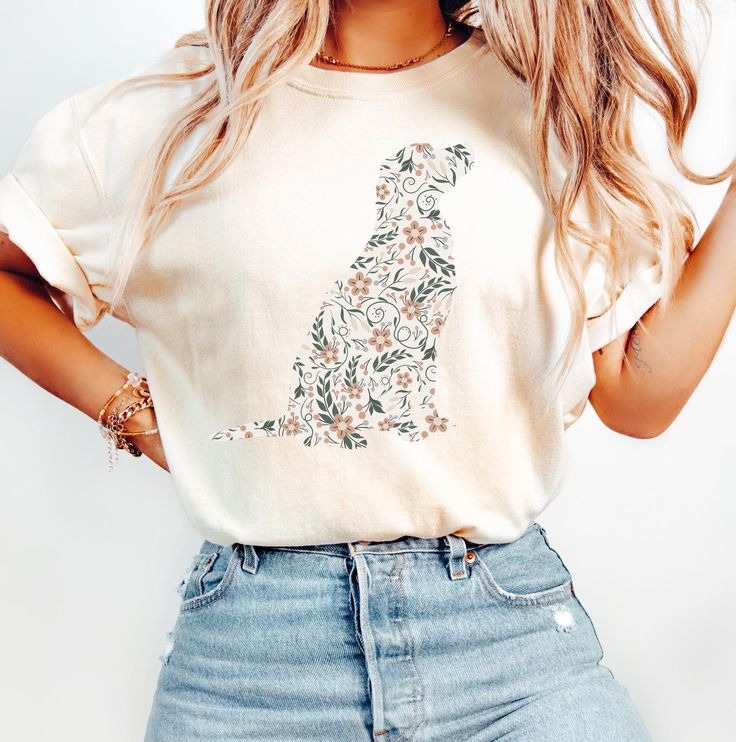The Timeless Canvas of the T‑Shirt
In the realm of apparel, few garments rival the enduring appeal and universal recognition of the humble T‑shirt. What began as an undergarment hidden beneath more formal attire has evolved into a cultural staple and personal statement piece. Today, the T‑shirt occupies a unique place at the intersection of comfort, creativity, and collective identity. From its simple construction to the myriad expressions it carries, the T‑shirt offers a fascinating lens through which to explore the evolution of modern dress and the myriad ways in which a garment can transcend its practical origins to become a symbol of artistic vision and social connectivity.
Origins and Early Adoption
The origins of the T‑shirt trace back to utilitarian beginnings. Initially introduced within military circles, its lightweight cotton weave and minimal design offered respite from stifling garments of the era. Soon, its ease of wear and management led sailors and industrial workers to adopt it as a practical underlayer. By the middle of the twentieth century, the garment had made its way into civilian life, thanks in part to promotional efforts by clothing manufacturers and the influence of popular culture. Icons of stage and screen donned the T‑shirt beneath jackets or as outerwear, signalling a shift in perception from underwear to casual statement.
Evolution into a Cultural Symbol
As the T‑shirt migrated into everyday wardrobes, it became a vehicle for self‑expression. Artists and activists alike recognized its potential as a blank canvas. Bold slogans, intricate illustrations, and photographic prints found new life on cotton fields once reserved for plain fabric. Concert merch tables and political rallies showcased designs that resonated with collective passions and individual convictions. Whether emblazoned with evocative imagery or rallying cries, the T‑shirt offered a low‑cost, high‑visibility platform. Its status evolved from simple garment to wearable art, carrying messages beyond fashion into social consciousness.
Design and Construction
At its core, the T‑shirt’s design remains notably consistent: a tubular torso, short sleeves, and a rounded neckline. Yet within this simplicity lies vast potential for variation. Textile weights range from lightweight jersey to sturdier interlock knits. Necklines shift between crew, scoop, and wide boat styles, each lending subtle differences in silhouette. Sleeve lengths can extend toward the elbow or truncate near the shoulder line. Seam finishes, stitching techniques, and fabric blends all contribute to tactile experience and drape. Thoughtful design choices affect the way the T‑shirt conforms to the body and moves with the wearer, ensuring that even the most basic version retains a degree of personality.
Material Choices and Sustainability
In contemporary discussion around fashion, material sourcing and environmental impact have taken center stage. Cotton, long celebrated for its breathability and softness, demands significant water resources and careful chemical management. In response, alternatives such as organic cotton, bamboo viscose, and recycled polyester have gained traction. Each offers unique benefits and trade‑offs: organic fibers reduce pesticide reliance, bamboo lends natural moisture management, and recycled synthetics divert waste from landfills. Innovative blends aim to marry comfort with conscientious production. As consumers grow more attuned to ecological considerations, brands and makers explore closed‑loop systems, renewable energy sources, and transparent supply chains to reinvigorate the T‑shirt’s humble origins with a commitment to future generations.
Printing and Embellishment Techniques
A key factor in the T‑shirt’s cultural magnetism lies in its capacity for decoration. Screen printing, with its vivid coloration and durable finish, remains a classic approach. Artists apply layers of ink through stenciled screens, each hue laid with precision. Digital direct‑to‑garment printing, by contrast, offers photographic detail and limitless colour gradients without the need for screens. Heat transfers and vinyl applications lend glossy or textured effects. Embroidery, beadwork, and applique introduce dimensional interest, elevating the garment into a tactile objet d’art. Even tie‑dye and bleach methods can yield spontaneous, one‑of‑a‑kind creations. By mastering these techniques, designers transform ordinary fabric into expressions of identity and creative exploration.
Styling and Cultural Influence
The democratic nature of the T‑shirt ensures it finds a place in virtually every style repertoire. Athleisure enthusiasts pair soft cotton heather tees with tailored joggers and streamlined sneakers. Streetwear devotees layer graphic shirts beneath oversized jackets and distressed denim, punctuated by statement accessories. Minimalists opt for solid‑hued garments with impeccable fit, allowing cut and material quality to speak volumes. Meanwhile, avant‑garde designers experiment with deconstructed hems, asymmetrical seams, and exaggerated proportions, pushing the garment toward conceptual territory. Within subcultures, the T‑shirt carries coded meanings: allegiance to a band, membership in an online community, or solidarity with a social movement. Its adaptability cements its role as a universal equalizer, worn by all regardless of background or creed.
The Role of Fit and Sizing
Though seemingly straightforward, achieving an ideal fit requires careful attention to body geometry and personal preference. A slim‑cut T‑shirt contours the torso, emphasizing silhouette and offering a modern aesthetic. A relaxed style drapes loosely, evoking a casual ease. Some designers highlight shoulder width with extended sleeves or broad cuts across the chest, creating a structured presence. Others prioritize length variations, allowing garments to sit at the hip or cascade toward the mid‑thigh for a streetwear edge. Sizing inclusivity further broadens the garment’s reach, with extended ranges honoring diverse body shapes. Clever pattern drafting and stretch incorporation ensure comfort without sacrificing form.
Iconic Moments in T‑Shirt History
Cultural milestones have cemented the T‑shirt’s status as more than just clothing. Rock legends popularized the garment in live performances, transforming backstage relic into stage attire and then mass‑market phenomenon. Political campaigns printed slogans that galvanized supporters and spread messages on city streets. Artistic collaborations have blurred boundaries between fashion and fine art, with galleries hosting exhibitions dedicated to graphic‑tee design. Films and television series immortalized characters through signature T‑shirt styles, creating demand that transcended budgets. Each watershed moment reaffirmed the garment’s capacity to capture zeitgeist and ignite trends, proving that the simplest form of dress can carry the deepest emotional and cultural resonance.
Economic Impact and Industry Insights
The T‑shirt industry spans global supply chains and localized artisanal studios. Major brands leverage large‑scale manufacturing hubs to deliver cost‑effective basics, while small‑batch producers specialize in hand‑printed exclusivity. Retail outlets range from sprawling department store racks to digital storefronts that allow for customization and direct‑to‑consumer personal engagement. Crowdfunding platforms and print‑on‑demand services empower aspiring designers to test concepts without heavy upfront investment. Economic analyses reveal that despite fluctuations in broader apparel markets, demand for quality T‑shirts remains remarkably resilient. Consumers continue to prioritize comfort and personal expression, ensuring that the garment retains its position as a top seller within the fashion sector.
Customization and the Participatory Trend
Participation has become a key driver of modern T‑shirt culture. Brands offer online design tools that guide users through colour selection, typography choices, and image placement. Interactive kiosks in retail spaces invite customers to stamp their own graphic creations directly onto garments. Workshops and do‑it‑yourself gatherings foster community by teaching screen printing and tie‑dye techniques. At the grassroots level, subcultural movements exchange fan‑made shirts that celebrate underground music scenes or niche interests. This democratization of design not only deepens personal connection to the garment but also challenges traditional notions of authorship and distribution within the fashion ecosystem.
Digital Influence and Social Media
In the age of social networking, visual storytelling amplifies the impact of T‑shirt design. Micro‑influencers showcase curated outfits in lifestyle snapshots, their branded or personally designed tees becoming focal points of engagement. Viral graphical memes are printed onto fabric and propagate through user‑generated content, creating a feedback loop between online culture and physical wear. Hashtag‑driven campaigns encourage supporters of causes to post images wearing themed shirts, weaving fashion into the fabric of activism. As augmented reality filters overlay digital T‑shirt mockups onto live images, consumers preview potential designs before purchase. Technology continues to expand the ways in which the garment connects virtual inspiration with real‑world appearance.
Caring for the T‑Shirt
A garment’s longevity often depends on proper maintenance. Gentle laundering in cool water helps preserve fabric integrity and prevent colour bleed. Air drying or low‑heat machine settings minimize shrinkage and reduce fabric stress. Mild detergents free from harsh chemicals safeguard both fibres and any printed elements. For embellished or embroidered shirts, turning the garment inside out before washing can shield delicate details. Storage in a cool, dry environment with minimal exposure to direct sunlight helps maintain vibrancy. By adopting mindful care practices, wearers extend the lifespan of their favourite pieces and reduce environmental strain through fewer replacements.
Ethical Considerations and Fair Labor
Beyond material concerns, the T‑shirt industry grapples with labor ethics and equitable trade. Sweatshop scandals have spotlighted the need for transparency in factory conditions and worker compensation. Certifications such as fair trade and living wage standards aim to ensure that garment makers receive just remuneration. Some initiatives support cooperative ownership models, granting sewing collectives agency over production and profit sharing. Brands committed to ethical manufacturing provide open documentation of supply chain audits and foster long‑term partnerships with trusted facilities. Consumers increasingly seek out labels that align with social values, demonstrating that ethical practices can serve as a powerful differentiator in a crowded market.
Innovations on the Horizon
Emerging technologies hint at the next generation of T‑shirt experiences. Smart textiles promise garments that monitor body temperature, track movement patterns, or even change hue in response to environmental stimuli. Bioengineered fabrics derived from cellular agriculture offer renewable alternatives to traditional crops and petrochemicals. Three‑dimensional knitting machines can produce seamless shirts with integrated shaping and minimal waste. Virtual fitting rooms and blockchain‑based authenticity certifications may redefine online retail, ensuring custom fits and genuine collectible editions. As these innovations converge, the T‑shirt’s legacy as a canvas for creativity and progress appears poised for further evolution.
Global Influence and Cross‑Cultural Exchange
Despite variations in regional dress codes and climate, the T‑shirt has achieved near universal reach. In urban centers, international streetwear labels coexist with homegrown designers who incorporate local motifs and techniques. Cross‑cultural collaborations blend aesthetic traditions, fusing indigenous patterns with contemporary graphic art. Tourists often purchase event‑themed shirts as tangible souvenirs, carrying fragments of place and memory back home. Through import and export networks, styles travel across continents, inspiring reinterpretations and hybrid forms. This global dialogue underscores the garment’s role as a shared cultural vocabulary, capable of bridging linguistic and geographic divides.
Conclusion
From its practical origins in military barracks and industrial workshops to its current status as a symbol of personal voice and global culture, the T‑shirt stands as a testament to the power of simplicity. Its unadorned silhouette invites endless variation in material, design, and message. As the fashion world embraces sustainability, technology, and community engagement, the T‑shirt adapts once again, reaffirming its capacity to reflect the aspirations of both maker and wearer. In this enduring canvas of cotton and creativity, every thread tells a story, every print sparks a conversation, and every wearer finds a means of standing out even as they blend in. The saga of the T‑shirt marches onward, woven into the very fabric of everyday life.

